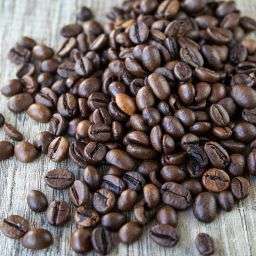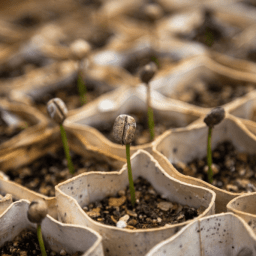
The question, “Do Coffee Beans Lose Caffeine Over Time?” taps into the heart of coffee culture and science. Caffeine, the vital component that gives coffee its beloved kick, is a subject of keen interest to enthusiasts and experts alike. Common perceptions vary, with some arguing that caffeine diminishes over time, while others believe its potency remains unaffected.
The importance of caffeine content cannot be overstated; it not only determines the strength of the coffee but also impacts flavor, aroma, and the overall coffee-drinking experience. This article delves into the stability of caffeine in coffee beans, exploring how various factors such as bean type, roast level, and storage conditions play pivotal roles in preserving its content.
The Nature of Caffeine in Coffee
Caffeine is a stable compound found in coffee beans, renowned for its stimulating effects. Its presence in coffee is a constant, but the concentration can vary significantly. Several factors influence caffeine content, including the type of coffee bean, with Arabica beans generally containing less caffeine than Robusta.
Additionally, roast level and storage conditions are crucial; improper storage can expose beans to elements that degrade quality and potentially affect caffeine concentration.
Roasting and Its Impact on Caffeine
The roasting process plays a fundamental role in defining the caffeine content of coffee beans. Conventional wisdom suggests that lighter roasts retain more caffeine than their darker counterparts. This is because roasting time affects the beans’ physical and chemical properties. Light roasts undergo a shorter roasting period, preserving more caffeine.
In contrast, extended roasting times for dark roasts lead to a slight reduction in caffeine content due to the breakdown of caffeine molecules under prolonged heat exposure. Thus, for those seeking a stronger caffeine kick, light roast coffee might be the preferable choice.
The Role of Proper Storage
Proper storage is paramount in maintaining the freshness and preserving the caffeine content of coffee beans. Oxygen, light, and moisture are the main adversaries in this quest, each capable of deteriorating coffee beans’ quality. Oxygen exposure initiates oxidation, a process that not only dulls the vibrant flavors but can also degrade caffeine molecules over extended periods.
Light, particularly UV rays, can catalyze this oxidation process, further accelerating the loss of quality. Moisture introduces an environment ripe for mold and bacteria growth, which compromises both the beans’ flavor and their healthiness.
To combat these elements, best practices for storing coffee beans involve minimizing their exposure to these damaging conditions. An airtight container is essential for keeping oxygen at bay, while opaque materials can shield the beans from light. Storing these containers in a cool, dry place further ensures that moisture does not compromise the beans’ integrity.
By adhering to these principles, the freshness of the coffee beans and their caffeine content can be preserved effectively.
Shelf Life of Coffee Beans
The shelf life of coffee beans is a critical factor that influences caffeine potency. While caffeine itself is a stable compound unlikely to dissipate quickly, the perceived strength and quality of the coffee can diminish over time due to the loss of aromatic oils and flavor compounds. Generally, coffee beans are at their peak quality shortly after roasting and begin to lose their freshness after about two weeks, assuming they are stored correctly.
To extend the shelf life of coffee beans and grounds, certain strategies can be employed. Keeping beans whole until just before brewing helps retain their flavors and aromas, as grinding increases the surface area exposed to oxygen, speeding up the oxidation process. Vacuum-sealing beans and storing them in airtight containers can further slow down the degradation process.
While refrigeration and freezing can be contentious topics among coffee enthusiasts, these methods, if done correctly, can prolong the shelf life of coffee beans. However, it’s crucial to protect the beans from moisture and condensation, which can occur when moving beans in and out of cold environments.
Brewing Methods and Caffeine Extraction
Different brewing methods affect the caffeine content in the final cup of coffee. Espresso, known for its rich flavor and concentration, typically offers a higher caffeine content per ounce than other methods. This is due to the high pressure and short brewing time, which efficiently extracts caffeine.
Drip coffee, on the other hand, involves a longer brewing time but usually results in a milder caffeine concentration due to the larger volume. Cold brew, characterized by its prolonged extraction process at low temperatures, tends to have a higher caffeine content due to the extended contact time between the water and coffee grounds.
The relationship between brewing temperature, time, and caffeine extraction is complex; higher temperatures and longer brewing times don’t necessarily equate to more caffeine, as over-extraction can occur, leading to bitter flavors without a significant increase in caffeine.
Perceptions of Taste and Caffeine
The taste and aroma of coffee significantly influence perceptions of caffeine content. A strong, robust flavor profile is often associated with higher caffeine levels, though this is not always accurate. The bitterness and boldness of a coffee blend can enhance the perception of caffeine strength, even if the actual caffeine content is average or below.
Similarly, aromatic compounds that contribute to the coffee’s flavor profile can make a coffee seem more potent than it is, highlighting the psychological aspect of caffeine consumption.
FAQs
Does the brewing method affect caffeine content?
Yes, the brewing method significantly impacts caffeine content, with methods like espresso typically delivering more caffeine per ounce compared to drip coffee or cold brew.
How long do coffee beans keep their caffeine?
Coffee beans retain their caffeine for a long time, but the perceived freshness and flavor quality, which can affect the enjoyment of the caffeine, diminish over weeks to months, depending on storage conditions.
Conclusion
In summary, caffeine in coffee beans demonstrates remarkable stability, with its content largely unaffected by time, provided the beans are stored properly. The perception of caffeine’s potency is more likely to be influenced by factors such as roast level, brewing method, and the individual’s sensitivity to caffeine rather than the actual caffeine content decreasing over time.
Best practices for enjoying coffee with optimal caffeine content include selecting a brewing method that suits one’s taste preferences and caffeine needs, using fresh beans, and adhering to proper storage techniques. Ultimately, the enjoyment of coffee is a personal experience, with caffeine playing a central role in shaping that experience.









